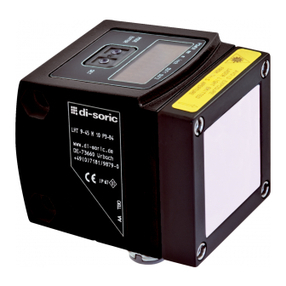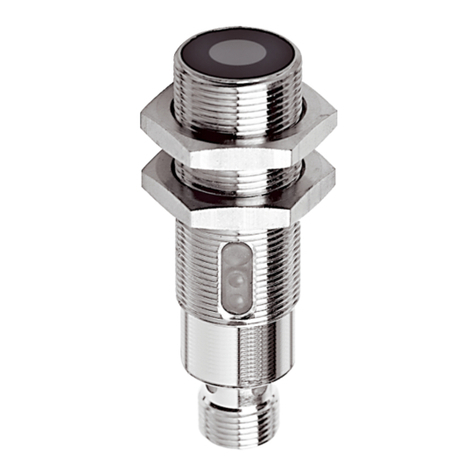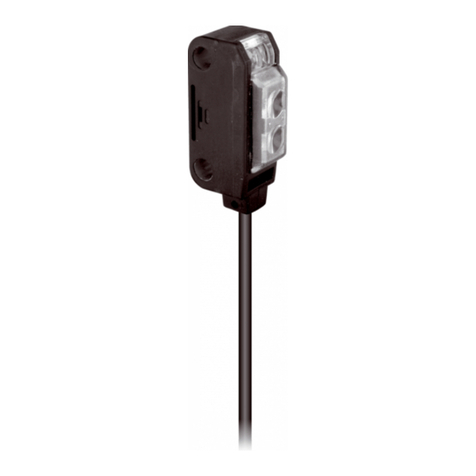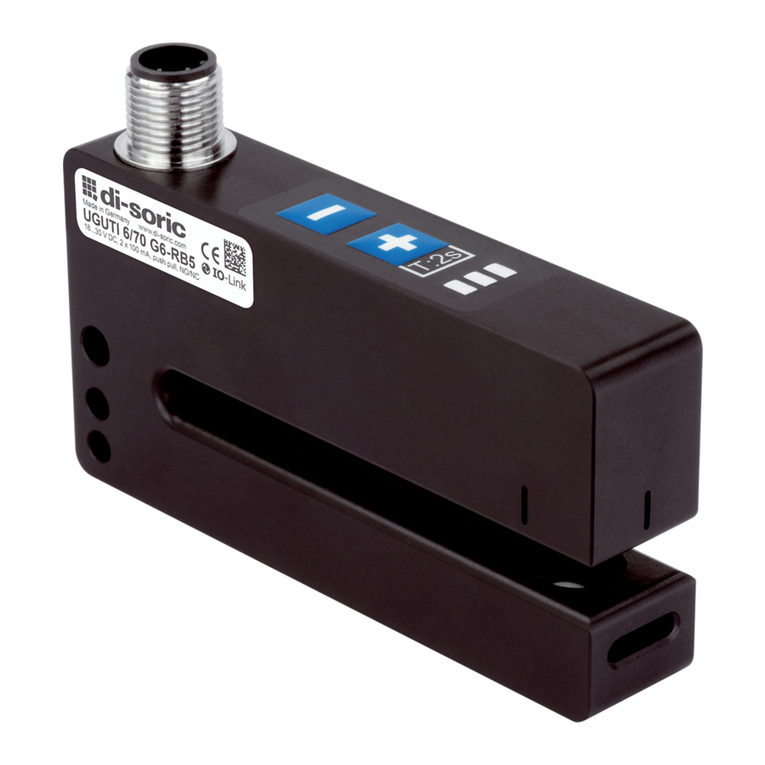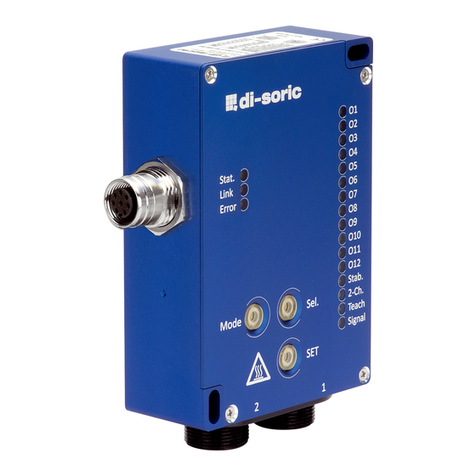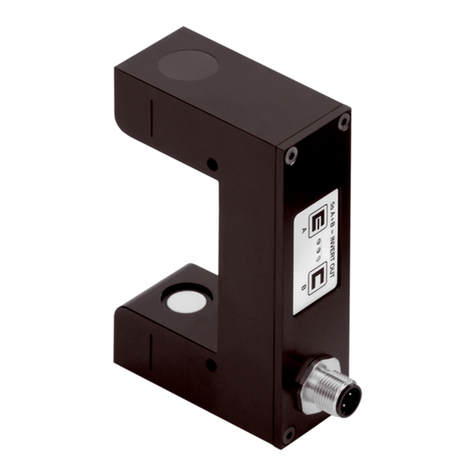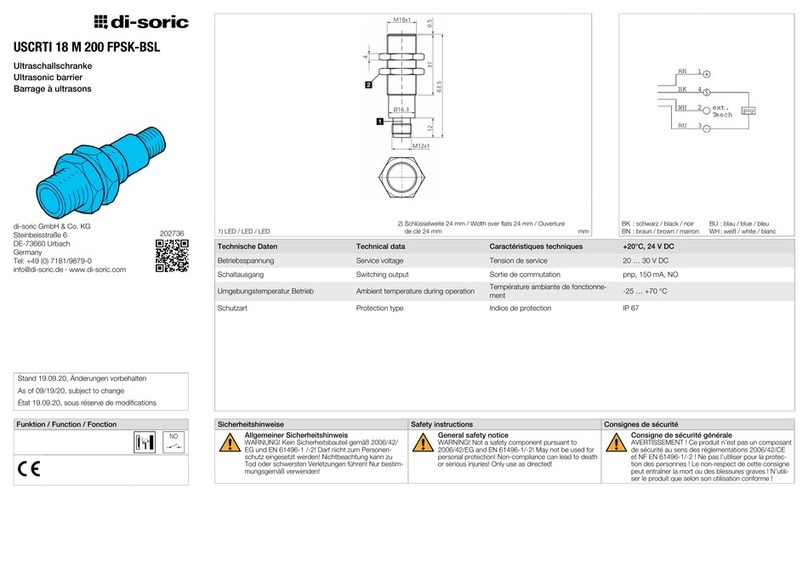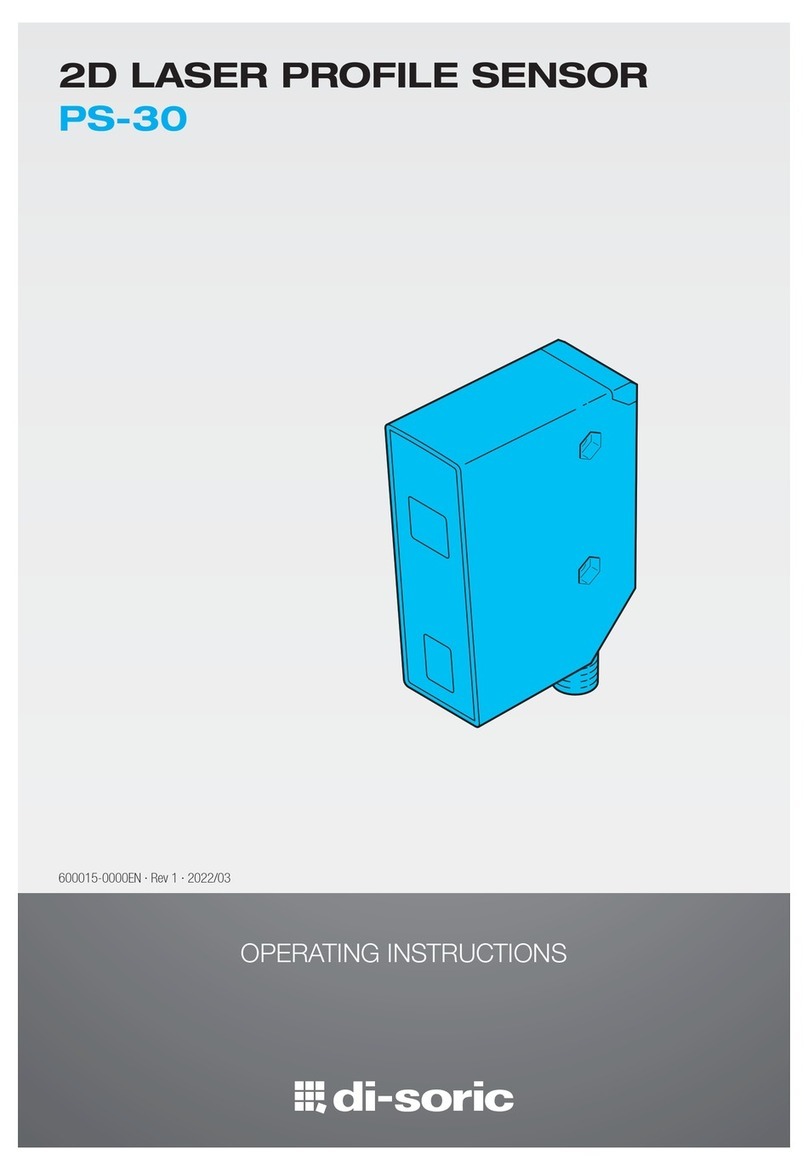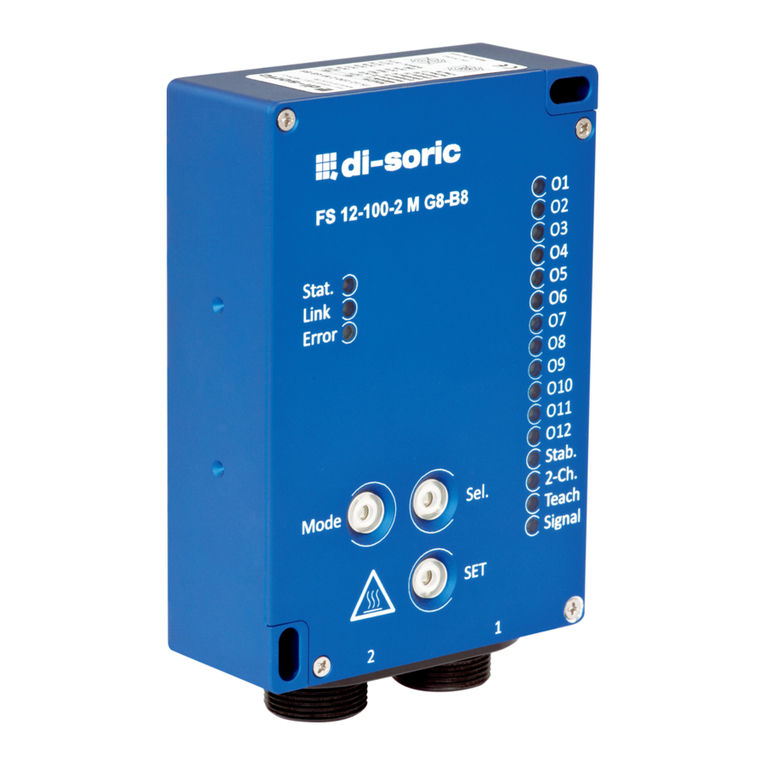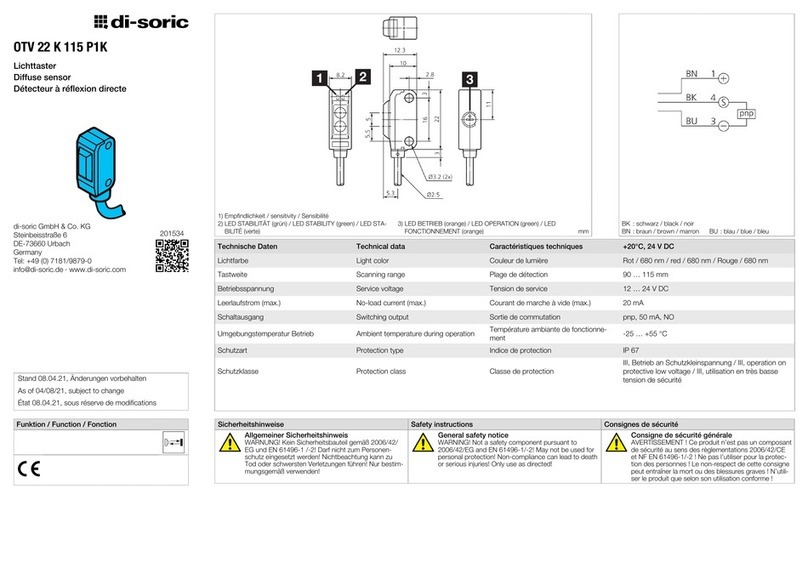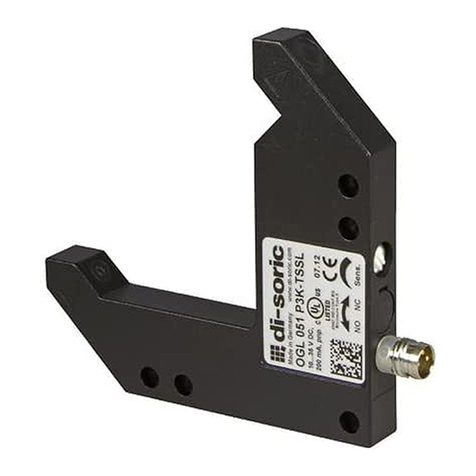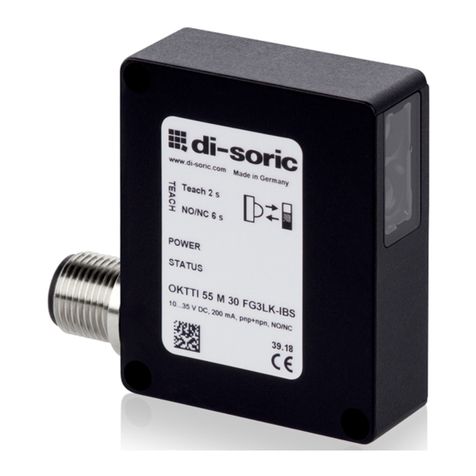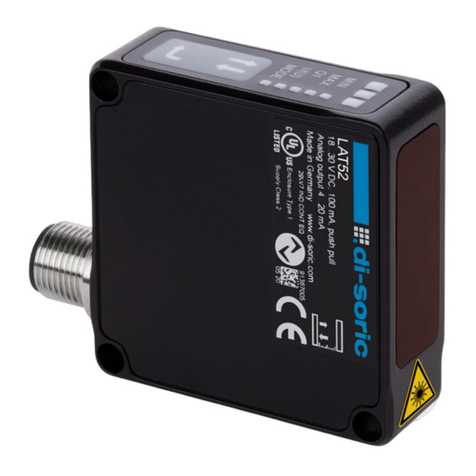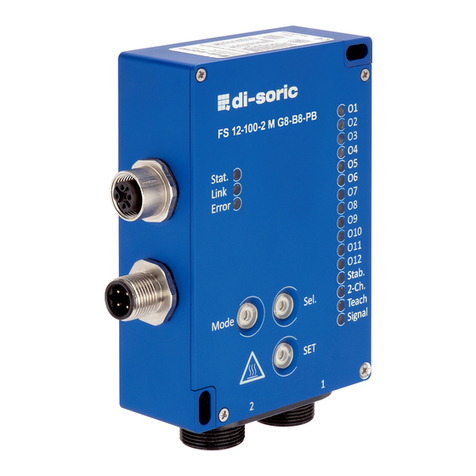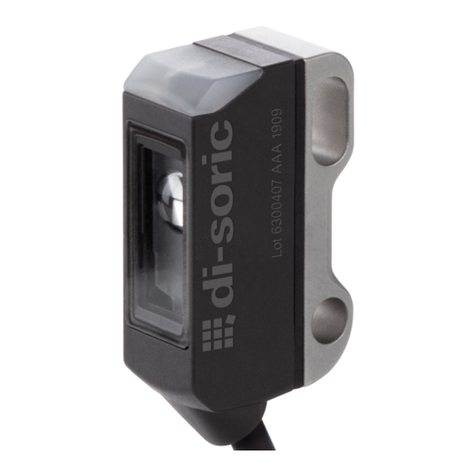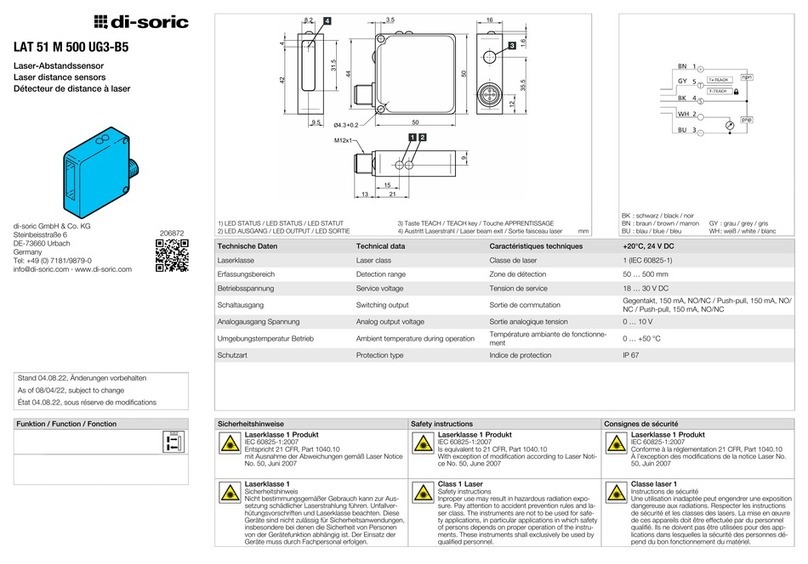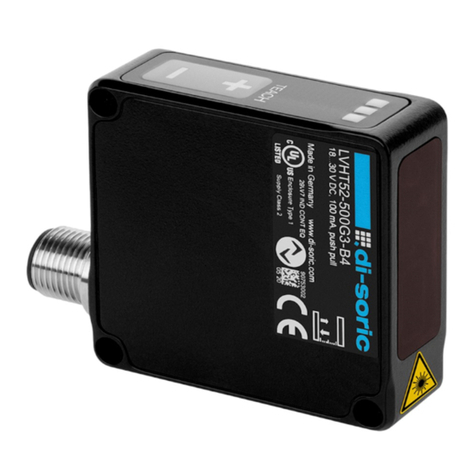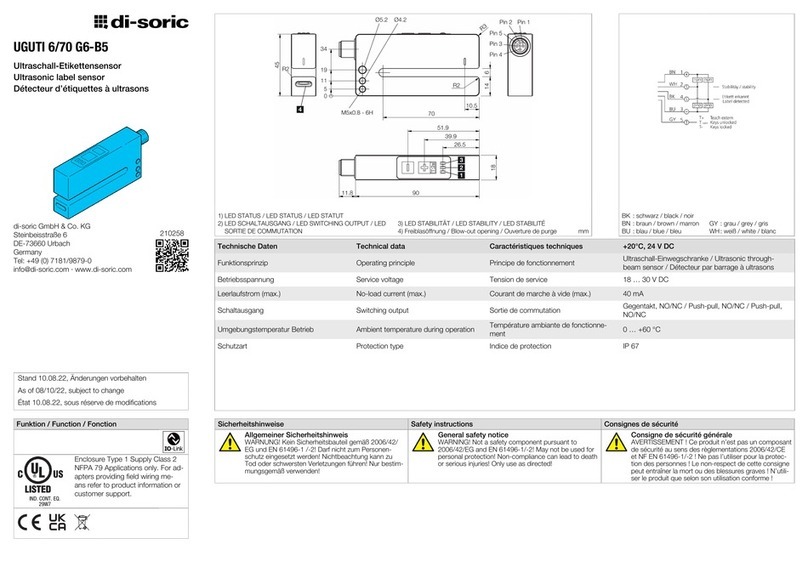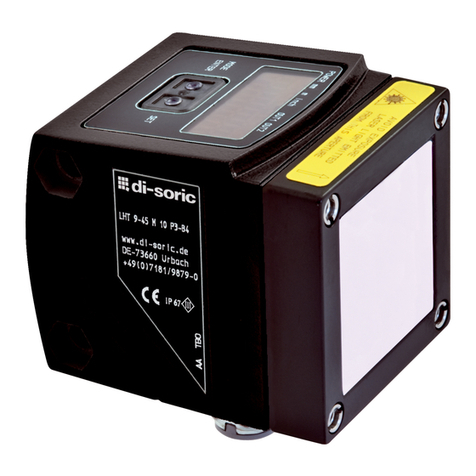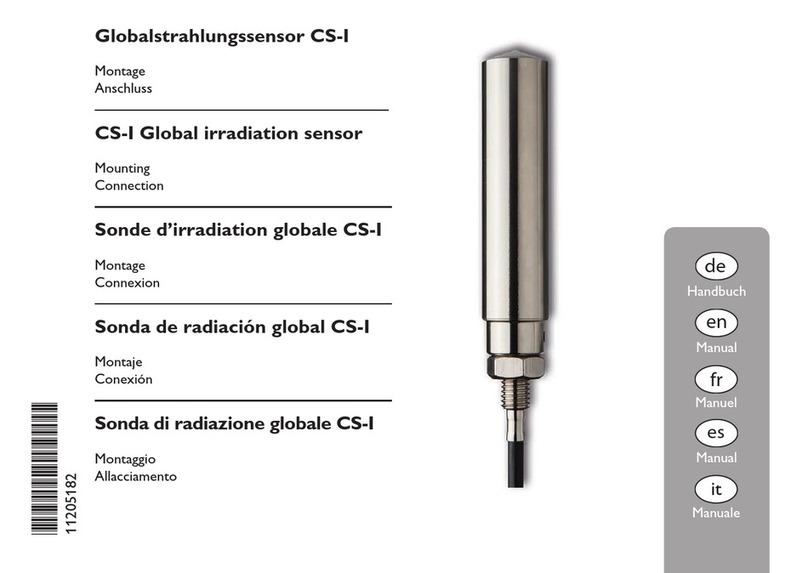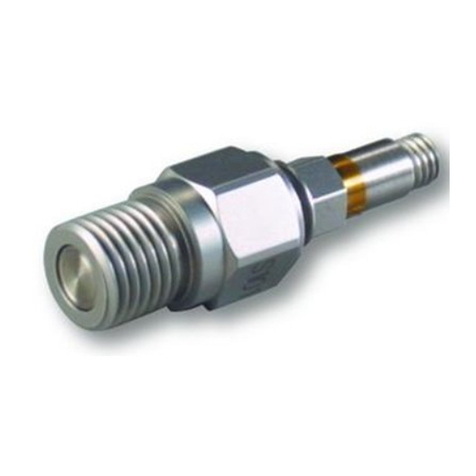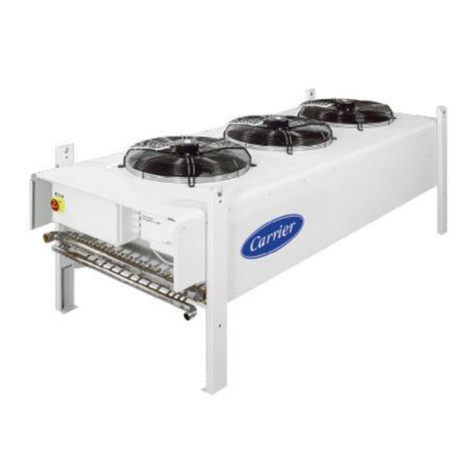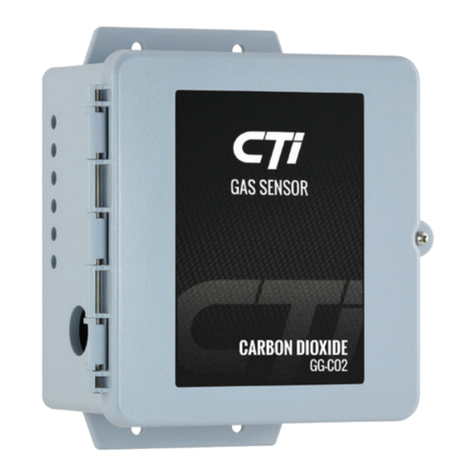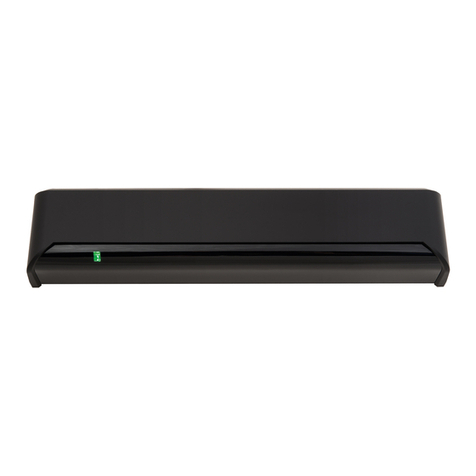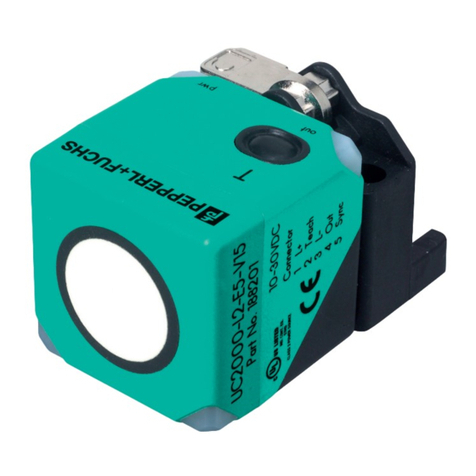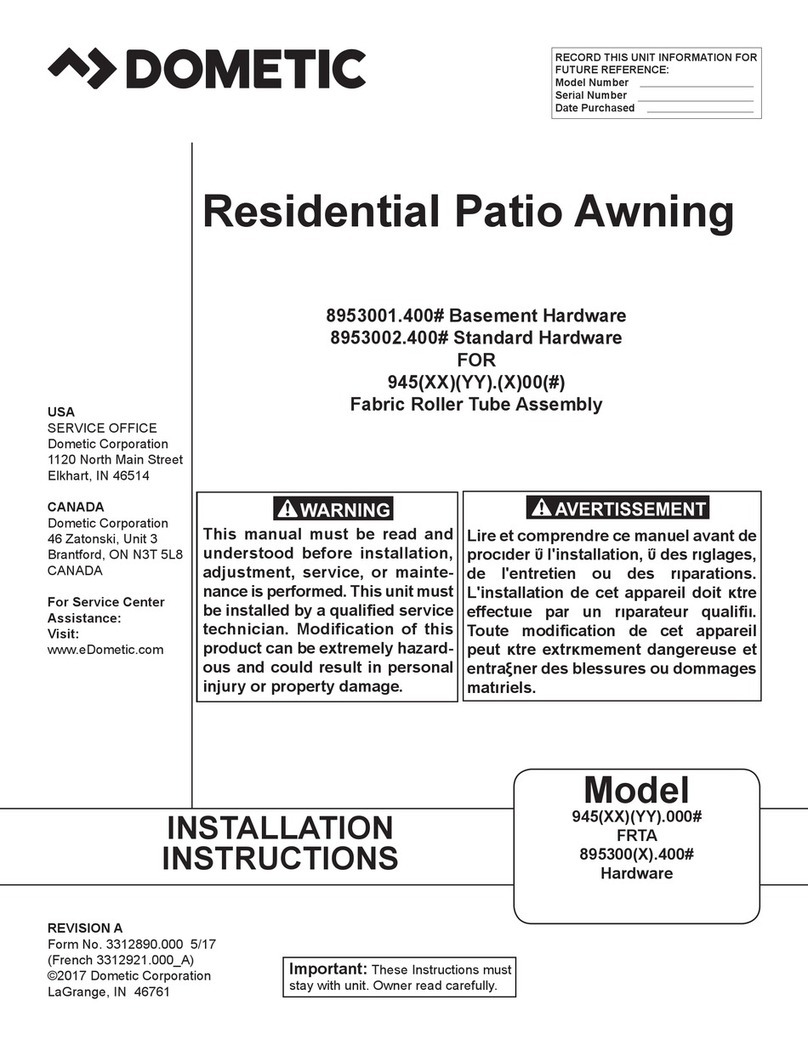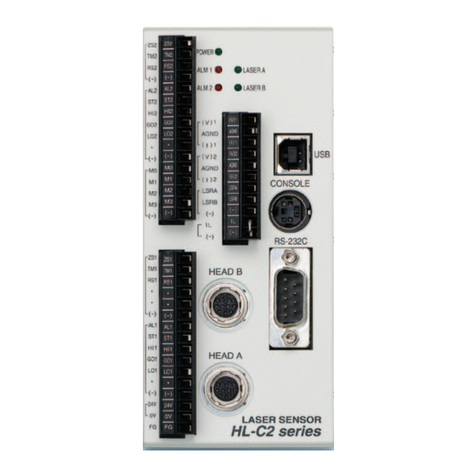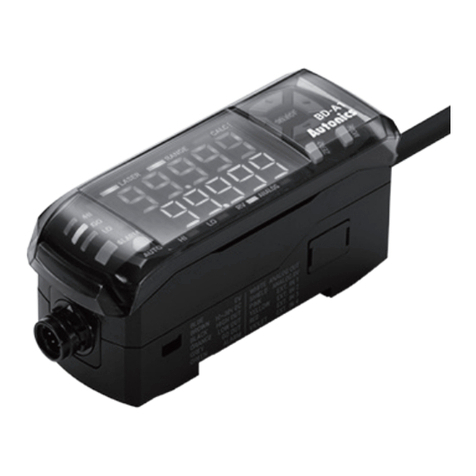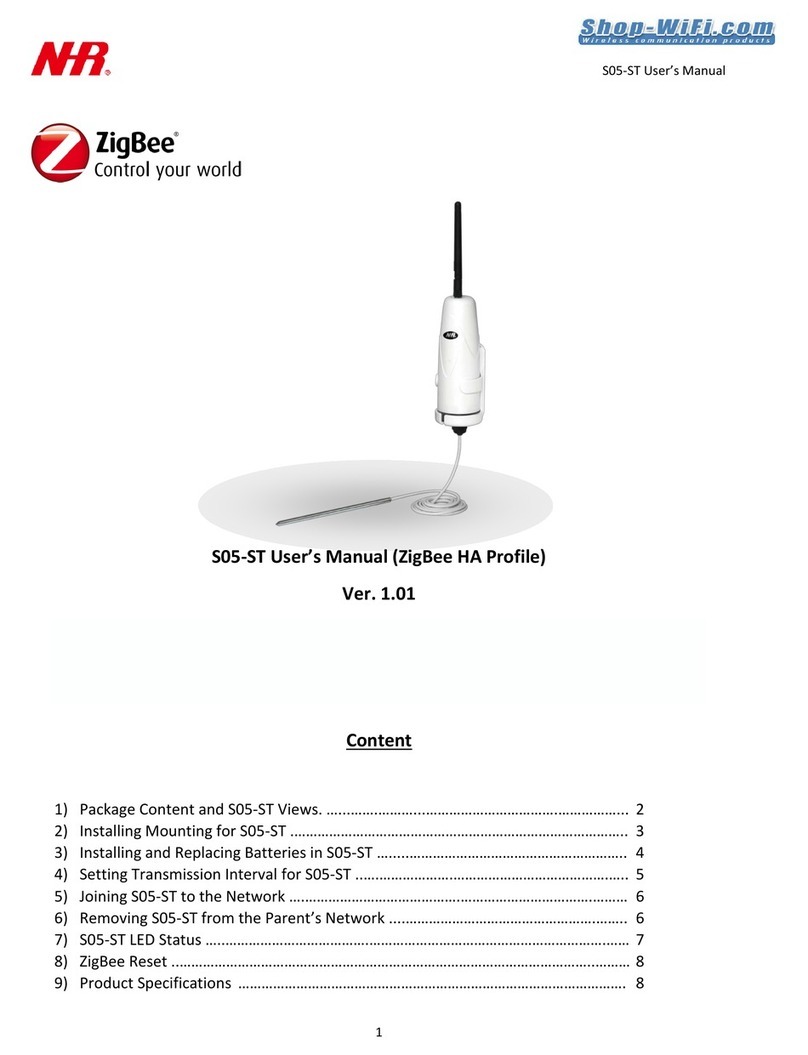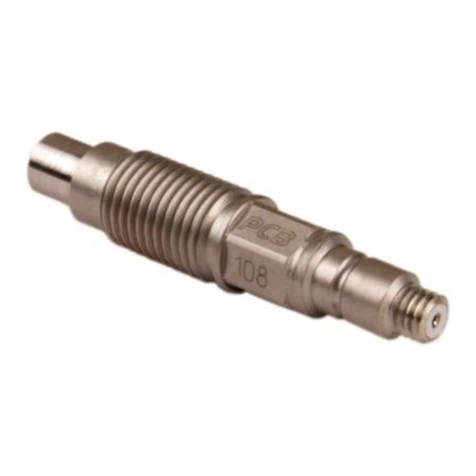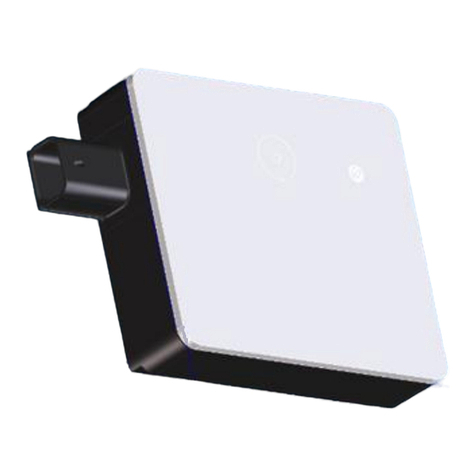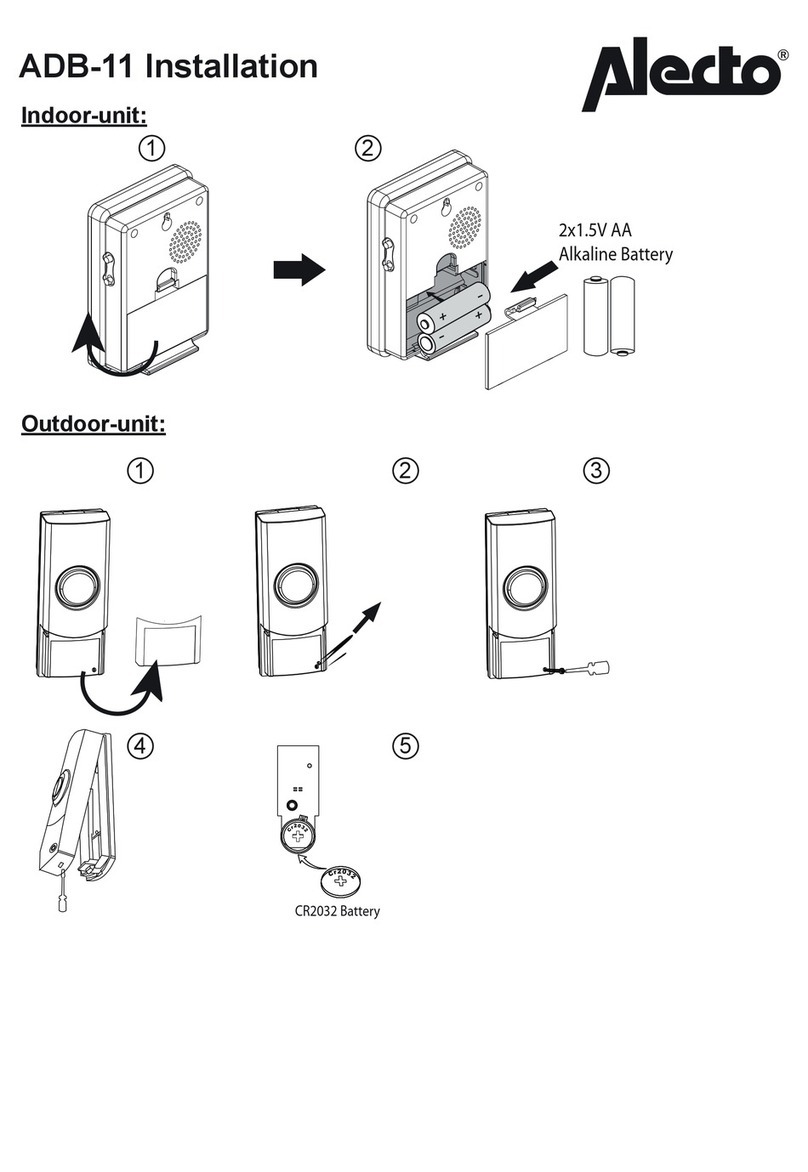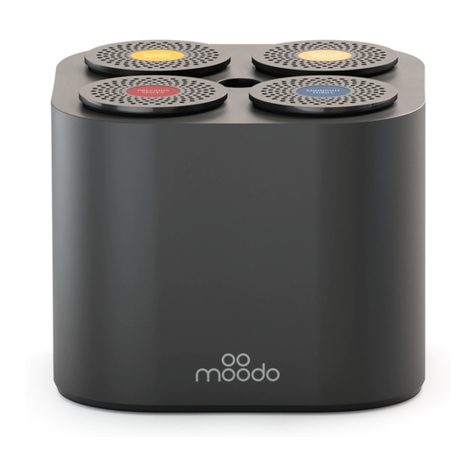
Betriebsanleitung / Operating instructions
Ultraschall-Sensoren / Ultrasonic sensors
US 46 ... B 07/2.1105de
iEine große Oberfläche des zu erfassen-
den Objektes erhöht die Schaltsicher-
heit.
iObjekte mit glatter Oberfläche können
bis zu einem Neigungswinkel von ca.
7° (US 46 K 150 ...) bzw. 10° (US 46 K
500 ...) erkannt werden. Raue und
stark strukturierte Objekte sind mit
größeren Neigungswinkeln erfassbar.
Physikalische Anwendungsgrenzen
- Ultraschall-Sensoren sind aus physikali-
schen Gründen (Schallgeschwindigkeit in
Luft 341 m/s bei 20 °C) relativ langsam.
- Aufgrund der Ultraschallfrequenz er-
rechnet sich eine Auflösung von
± 1,8 mm bei 175 kHz (US 46 K 500 ...)
bzw. ± 1,0 mm bei 350 kHz
(US 46 K 150 ...).
- Keine Funktion unter Wasser, in Vakuum
und bei größeren Überdrücken.
- Sehr heiße (> +100 °C) oder sehr kalte
Objekte (< -10 °C) können u. U. nicht
abgetastet werden (Turbulenzen der Luft
mit Brechung und Streuung des Schalls).
- Starke Luftströmungen > 20 m/s kön-
nen die Abtastsicherheit verringern.
- Eisbildung auf der Wandleroberfläche
reduziert die Empfindlichkeit des Sen-
sors (Abhilfe durch Auftragen einer
dünnen Schicht Silikonfett auf die
Wandleroberfläche).
- Sehr kleine oder sehr schlecht reflektie-
rende (schallabsorbierende) Objekte
können u. U. nicht bis zum Grenzab-
stand erfasst werden. Schallabsorbieren-
de Materialien sind z.B. Schaumgummi,
lose Baumwolle, Filz, Textilien, ausgasen-
de Flüssigkeiten, rutschender Sand usw.
- Bei zu großer Neigung des zu erfassen-
den Objektes zur Strahlachse wird nicht
mehr genügend Schall in Empfänger-
richtung reflektiert (besonders bei
größeren, ebenen Flächen). Glatte
Objekte können bis zu einer Neigung
von 10° sicher detektiert werden. Rauhe
Oberflächen unter Umständen bis 60°
oder mehr.
Montage
iUm eine einwandfreie Funktion der
Ultraschall-Sensoren US 46 ... zu ge-
währleisten, müssen die mit dem
Montagematerial gelieferten Gummi-
unter-/zwischenlagen unbedingt ver-
wendet werden.
iStarke Fremdschallquellen in der Schall-
achse von Ultraschall-Sensoren sind zu
vermeiden.
iBeim Einbau in Rohre muss der Rohr-
durchmesser größer als der Schallkeu-
lendurchmesser sein (siehe Abtastfel-
der). Das Verhalten des Ultraschall-
Sensors muss durch Versuche ermittelt
werden.
iNie die Schallachsen von Geräten der
gleichen Baureihe aufeinander richten.
Die Montage erfolgt mit Gummizwischen-
lagen über das Gehäusegewinde.
Bestimmungsgemäßer Gebrauch
Ultraschall-Sensoren US... werden als Be-
standteil eines übergeordneten Gesamt-
systems zum Erfassen von Objekten ein-
gesetzt.
-Konformität
EMV-Richtlinie DIN EN 60947-5-2
Niederspannungs- 73/23/EWG
richtlinie 93/68/EWG
Sicherheitshinweise
Ultraschall-Sensoren US... sind nicht
zulässig für Sicherheitsanwendungen,
insbesondere bei denen die Sicherheit
von Personen von der Gerätefunktion
abhängig ist.
Ultraschall-Sensoren dürfen nicht in
explosionsgefährdeten Räumen betrie-
ben werden.
Der Betreiber des übergeordneten
Gesamtsystems, z.B. einer Maschinen-
anlage, ist für die Einhaltung der für den
speziellen Einsatzfall geltenden nationa-
len und internationalen Sicherheits- und
Unfallverhütungsvorschriften verant-
wortlich.
Bei Maschinenplanung und Verwen-
dung der Ultraschall-Sensoren US... sind
die einsatzspezifischen Sicherheits- und
Unfallverhütungsvorschriften einzuhal-
ten, wie z.B.:
- EN 60204, Elektrische Ausrüstung von
Maschinen
- EN 292, Sicherheit von Maschinen,
allgemeine Gestaltungsleitsätze
- DIN 57100 Teil 410, Schutz gegen
gefährliche Körperströme
Montage und elektrischer Anschluss der
Ultraschall-Sensoren US... darf nur von
Fachpersonal nach geltenden Vorschrif-
ten in spannungsfreiem Zustand und
bei ausgeschalteter Maschine erfol-
gen.
Die Maschine muss gegen Wieder-
einschalten gesichert sein.
Funktion
Ultraschall-Sensoren US... senden mittels
eines Ultraschallwandlers Schallwellen
einer bestimmten Frequenz über das
Übertragungsmedium Luft aus. Das
Senden der Schallwellen erfolgt in zeitlich
begrenzten Takten. Derselbe Ultraschall-
wandler dient in den Sendepausen als
Schallempfänger mit ausgeprägter Richt-
charakteristik. Das Abtastfeld ist keulen-
förmig und relativ schmal. Durch eine
Laufzeitmessung werden die in den
Sendepausen vom Zielobjekt reflektierten
Schallwellen als Echos im Gerät verarbeitet
und daraus ein abstandsproportionales
Ausgangssignal gebildet.
Der Schaltausgang (Transistorausgang
pnp) des Gerätes wird dann aktiv, wenn
ein abgetastetes Objekt einen am Potenti-
ometer voreingestellten Abstandswert
unterschreitet.
Der Sensor US 46 K 150 ... verfügt über
eine einstellbare Hysterese. Durch die
einstellbare Hysterese lässt sich z.B. auch
eine Min./Max.-Niveauüberwachung
realisieren.
Beim Sensor US 46 K 500 ... lässt sich eine
Impulsverlängerung von 0,4 s bis 8 s
einstellen.
!Verwenden Sie zum Einstellen der
Potentiometer unbedingt den mitgelie-
ferten Miniaturschraubendreher. Die
Verwendung eines ungeeigneten
Werkzeugs kann zur Beschädigung des
Sensors führen.
iBei Raumtemperatur können praktisch
alle Objekte innerhalb des Arbeitsberei-
ches des Sensors erfasst werden.
Authorized use
Ultrasonic sensors US... are used as a
part of a higher-level overall system for
detection of objects.
conformity
EMV directive DIN EN 60947-5-2
Low voltage 73/23/EWG
directive 93/68/EWG
Safety instructions
Ultrasonic sensors US... are not to be
used for safety applications, in particular
applications in which safety of persons
depends on proper operation of the
instruments.
Ultrasonic sensors may not be operated
in explosion-hazard areas.
The operator of the higher-level overall
system, e.g. a machine installation, is
responsible for complying with the
national and international safety and
accident prevention regulations which
apply to the specific use.
When carrying out machine planning
and using the Ultrasonic sensors US...,
the safety and accident prevention
regulations specific to use must be
complied with, e.g.:
- EN 60204, Electrical equipment of
machines
- EN 292, Safety of machines, general
principles of design
- DIN 57100 Teil 410, Protection against
dangerous electric shock
Assembly and electrical connection of
Ultrasonic sensors US... may only be
carried out by skilled personnel accor-
ding to applicable regulations in de-
energized condition and when the
machine is switched off.
The machine must be secured to
ensure that it cannot be switched
back on.
Function
Ultrasonic sensors US… emit sound waves
at a specific frequency through the trans-
mission medium of air by means of an
ultrasonic transducer. The sound waves
are emitted in time-limited cycles. The
same ultrasonic transducer is used as a
sound receiver with a distinctive directio-
nal characteristic during the transmit
pauses. The detection area is lobar and
relatively narrow. The sound waves re-
flected in the transmit pauses from the
target are processed as echoes in the unit
on the basis of a transit-time measure-
ment, and an output signal proportional
to the distance is generated from this.
The switching output (transistor output
pnp) of the unit is then activated when a
detected object comes closer than a
distance preset on the potentiometer.
The sensor US 46 K 150 ... has an adjus-
table hysteresis. Using the adjustable
hysteresis it is possible, e.g. to also realise
a min./max. level monitor.
Beim Sensor US 46 K 500 ... lässt sich eine
Impulsverlängerung von 0,4 s bis 8 s
einstellen.
!It is imperative you use the miniature
screwdriver supplied to adjust the
potentiometer. The use of an unsuitab-
le tool can result in damage to the
sensor.
iAt room temperature, virtually all
objects within the sensor’s working
range can be detected.
iA large surface of the object to be
detected increases the switching reliabi-
lity.
iObjects with smooth surfaces can be
detected up to an inclination angle of
approx. 7° (US 46 K 150 ...) or 10° (US
46 K 500 ...). Rough and heavily textu-
red objects can be detected at larger
inclination angles.
Physical application limits
- For physical reasons (speed of sound in
air 341 m/s at 20 °C), ultrasonic sensors
are relatively slow.
- The calculated resolution is ± 1.8 mm at
180 kHz 175 kHz (US 46 K 500 ...) resp.
± 1,0 mm at 350 kHz (US 46 K 150 ...)
on the basis of the ultrasonic frequency.
- The sensors do not function under
water, in a vacuum or at high excess
pressures.
- Very hot objects (> +100 °C) or very
cold objects (< -10 °C) may, under
certain circumstances, not be detected
(air turbulence with refraction and
scattering of the sound).
- Strong air flow > 20 m/s may reduce the
detection reliability.
- Ice formation on the transducer surface
reduces the sensitivity of the sensor (this
can be remedied by applying a thin coat
of silicone grease to the transducer
surface).
- Very small objects or very poorly reflec-
ting objects (sound-absorbing objects)
may, under certain circumstances, not
be detected as far as the limit zone.
Sound-absorbing materials include foam
rubber, loose cotton, felt, textiles,
outgassing fluids and slippery sand etc.
- If the object to be detected is too greatly
inclined with respect to the beam axis,
this means that adequate sound will not
be reflected in the direction of the
receiver (particularly in the case of large,
flat surfaces). Smooth objects may be
detected reliably up to an angle of
inclination of 10°. Rough surfaces may
be detected under certain circumstances
up to an angle of inclination of 60° or
more.
Assembly
iIt is essential that the rubber shims/
intermediate adapters supplied with
the mounting hardware be used in
order to ensure that the ultrasonic
sensors US 46 ... function correctly.
iAvoid strong external sound sources on
the sound axis of ultrasonic sensors.
iIf fitting in pipes, the pipe diameter
must be larger than the sound cone
diameter (see detection areas). Deter-
mine the behaviour of the ultrasonic
sensor by means of trials.
iNever aim the sound axes of devices of
the same series towards each other.
The unit can be mounted with rubber
shims using the housing thread.
Montage mit Gummiteilen Mounting with rubber parts
Halter mit Bohrung ∅21 /
retaining plate with bore ∅21
Gummibuchse / rubber bush Unterlegscheibe / washer
Mutter / nut




